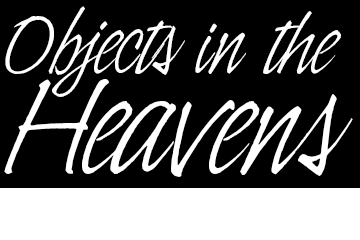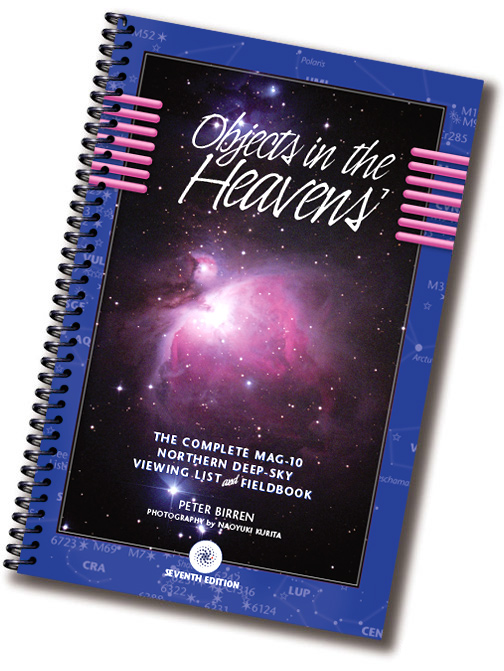


(The following review was of OITHv2. It's only gotten better.)

BOOK REVIEW: by Faith Jordan of the Webb Society
OBJECTS IN THE HEAVENS, DEEP SKY VIEWING LIST AND FIELD BOOK FOR SMALL SCOPES AND BINOCULARS, by Peter Birren
"I would certainly have appreciated this little book when I was starting out in deep sky observing."
This is a small A5 book intended for users of small telescopes and binoculars, containing 717 deep sky objects, including the Messier Catalogue, in 63 constellations, all within 128 pages.
All the objects in the book are in the Northern Hemisphere, so the book is of no use to Southern Hemisphere observers, unless they are paying a visit to the Northern Hemisphere.
At first glance, it is an attractive publication with a spectacular photo of M42 on the front cover. Inside, it is well laid out and easy to read, and the catalogue section is arranged logically in order of constellation. The book is spiral bound and opens out flat which is always a plus point, making it easier to read and refer to, without the inconvenience of anything being hidden in the binding, or the book closing when you are trying to refer to it.
The introduction has a nice touch for Webb Society members as there is a quote from Rev T.W. Webb's Celestial Objects for Common Telescopes plus there are other quotes from that publication throughout the catalogue section, an example of which, describing the Virgo region, states: "A constellation remarkable for the wonderful nebulous region, in which a far greater number are accumulated than in any other equal area of the heavens."
There is also a section with symbols and abbreviations plus a guide to how the catalogue section is organized as well as a very (necessarily) brief guide to "Basic Viewing". As stated in the introduction, the book is not a "how to" or "why" publication, but a field guide.
The objects in the catalogue section, as well as the object category also have descriptions, presumably the original NGC descriptions and have !! or ! depending on how much of a "must see" or "notable object" it happens to be. Naturally the more showy objects such as M31 or M42 have two exclamation marks next to their names. Also, if an object is greater than magnitude 7, it is highlighted in bold. The RA and declination of each object is included as well as the magnitude. There is also space to add your own notes should you so wish, but personally, I don't really think it allows enough room for that. However, if it gets beginning (and other!) deep sky observers into the habit of note taking and sketching (there are circles at the rear of the book for sketches) then that is nothing but a good thing as far as this reviewer is concerned.
Major stars are listed, as are major meteor showers. Right ascension, declination and field of view are also explained in clear, simple terms, which is very useful.
There are maps, but personally I feel these are rudimentary and cluttered. I would advise using this book in conjunction with a good star atlas, rather than relying on the maps alone.
The book is intended to be used at the telescope and written in, but I feel it is too flimsy to last long outside at night in dewy conditions, especially when taking into account the damp climate of the UK and northern Europe (and presumably the northern US).
I feel this is a very useful publication and have no hesitation in recommending it to Webb Society members, particularly those who are just starting out in deep sky observing and/or have small telescopes or binoculars. I would certainly have appreciated this little book when I was starting out in deep sky observing in the early 1990's.
– Faith Jordan